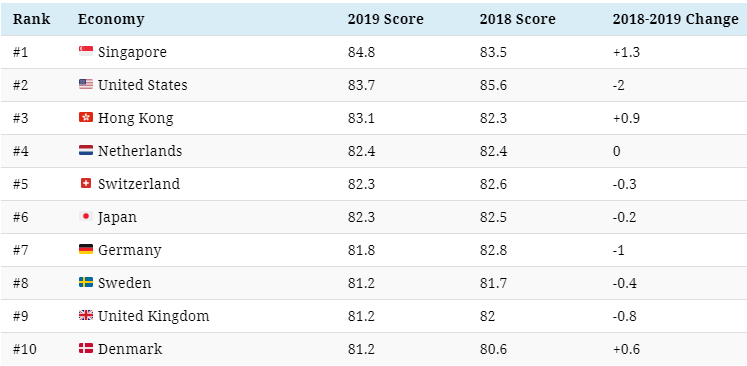Ranked: Which Economies Are The Most Competitive?

What makes a country successful from an economic perspective? Many think of this in terms of GDP per capita—but in a rapidly changing world, our definitions of progress have evolved to encompass much more.
This animated Chart of the Week visualizes 10 years of global competitiveness, according to the World Economic Forum, and tracks how rankings have changed in this time.
How Do You Measure Competition?
The WEF’s annual Global Competitiveness Report defines the concept of ‘competitiveness’ as an economy’s productivity—and the institutions, policies, and factors which shape this.
This year’s edition unpacks the national competitiveness of 141 countries, using the newly-introduced Global Competitiveness Index (GCI) 4.0 which looks at four key metrics:
Each country’s overall competitiveness score is an average of these 12 main pillars of productivity. With that out of the way, let’s dive into the countries which emerge triumphant.
The Most Competitive: Movers and Shakers
The world’s top countries excel in many fields—but there can only be one #1. In 2019, Singapore wins the coveted “most competitive economy” title, with an 84.8 score on the GCI.
The nation’s developed infrastructure, health, labor market, and financial system have all propelled it forward—swapping with the U.S. (83.7) for the top spot. However, more can be done, as the report notes Singapore still lacks press freedom and demonstrates a low commitment to sustainability.
How have the current scores of the most competitive economies improved or fallen behind, compared to 2018?
- Enabling Environment
Includes: Institutions, Infrastructure, ICT Adoption*, Macroeconomic Activity
*Refers to information and communications technology - Human Capital
Includes: Health, Skills - Markets
Includes: Product Market, Labor Market, Financial System, Market Size - Innovation Ecosystem
Includes: Business Dynamics, Innovation Capability
(Click on image to enlarge)

Finland (80.2) and Canada (79.6) are notable exits from this top 10 list over the years. Meanwhile, Denmark (81.2) disappeared from the rankings for five years but managed to climb back up in 2018.
Regional Competitiveness: Highs and Lows
Another perspective on the most competitive economies is to look at how countries fare within regions, and how these regions compete among each other.
The Middle East and North Africa (MENA) has the widest gap in competitiveness scores—Israel (76.7) scores over double that of poorest-performing Yemen (35.5). Interestingly, the MENA region showed the most progress, growing its median score by 2.77% between 2018-2019.
The narrowest gap is actually in South Asia, with just a single-digit difference between India (61.4) and Nepal (51.6). However, the region also grew the slowest, with only a 0.08% increase in median score over a year.
(Click on image to enlarge)

Across all regions, the WEF found that East Asia’s 73.9 median score was the highest. Europe and North America were not far behind with a 70.9 median score. This is consistent with the fact that the most competitive economies have all come from these regions in the past decade.
As all these countries race towards the frontier—an ideal state where productivity growth is not constrained—the report notes that competitiveness “does not imply a zero-sum game”. Instead, any and all countries are capable of improving their productivity according to the GCI measures.
Disclosure: None



